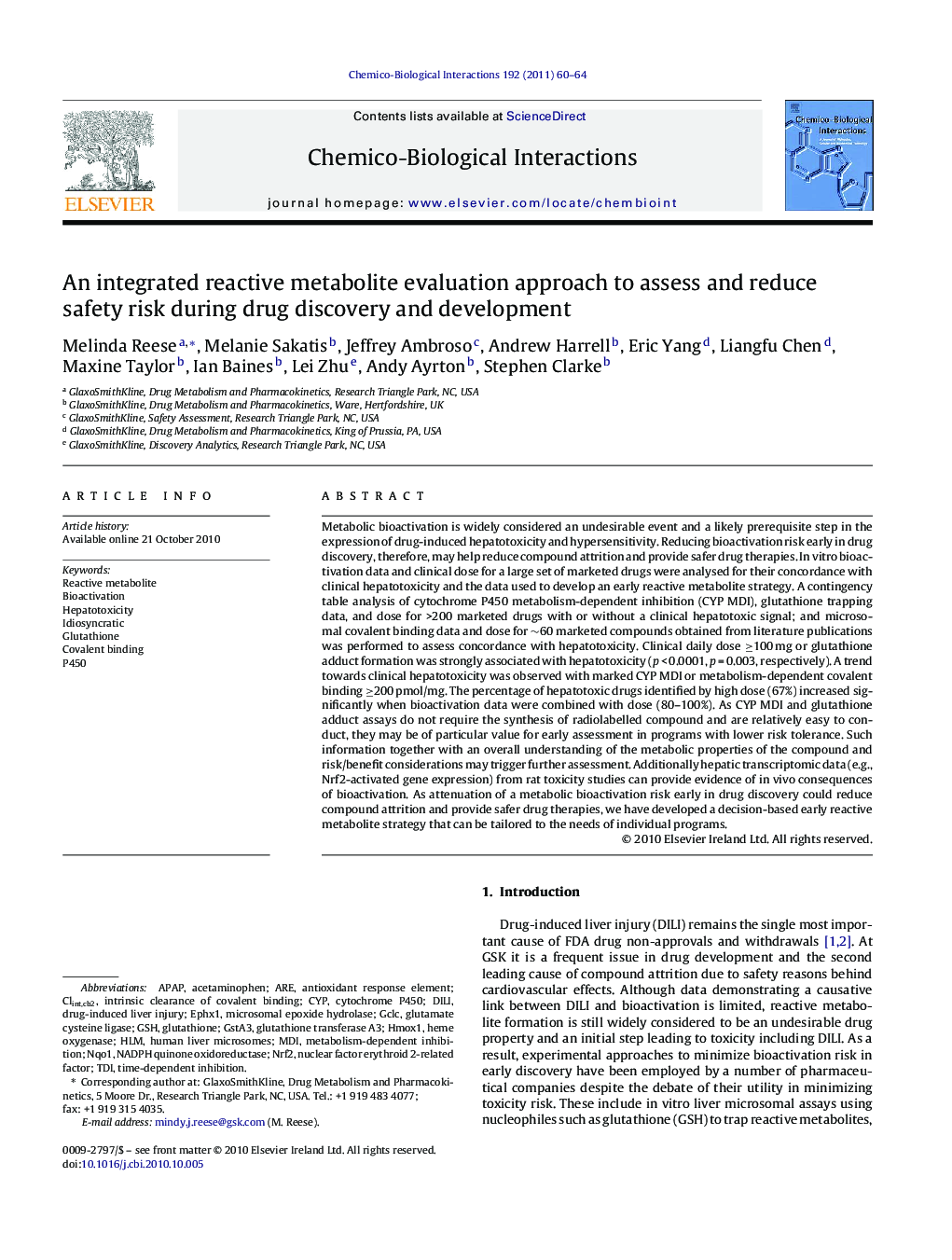| کد مقاله | کد نشریه | سال انتشار | مقاله انگلیسی | نسخه تمام متن |
|---|---|---|---|---|
| 2581016 | 1561642 | 2011 | 5 صفحه PDF | دانلود رایگان |

Metabolic bioactivation is widely considered an undesirable event and a likely prerequisite step in the expression of drug-induced hepatotoxicity and hypersensitivity. Reducing bioactivation risk early in drug discovery, therefore, may help reduce compound attrition and provide safer drug therapies. In vitro bioactivation data and clinical dose for a large set of marketed drugs were analysed for their concordance with clinical hepatotoxicity and the data used to develop an early reactive metabolite strategy. A contingency table analysis of cytochrome P450 metabolism-dependent inhibition (CYP MDI), glutathione trapping data, and dose for >200 marketed drugs with or without a clinical hepatotoxic signal; and microsomal covalent binding data and dose for ∼60 marketed compounds obtained from literature publications was performed to assess concordance with hepatotoxicity. Clinical daily dose ≥100 mg or glutathione adduct formation was strongly associated with hepatotoxicity (p < 0.0001, p = 0.003, respectively). A trend towards clinical hepatotoxicity was observed with marked CYP MDI or metabolism-dependent covalent binding ≥200 pmol/mg. The percentage of hepatotoxic drugs identified by high dose (67%) increased significantly when bioactivation data were combined with dose (80–100%). As CYP MDI and glutathione adduct assays do not require the synthesis of radiolabelled compound and are relatively easy to conduct, they may be of particular value for early assessment in programs with lower risk tolerance. Such information together with an overall understanding of the metabolic properties of the compound and risk/benefit considerations may trigger further assessment. Additionally hepatic transcriptomic data (e.g., Nrf2-activated gene expression) from rat toxicity studies can provide evidence of in vivo consequences of bioactivation. As attenuation of a metabolic bioactivation risk early in drug discovery could reduce compound attrition and provide safer drug therapies, we have developed a decision-based early reactive metabolite strategy that can be tailored to the needs of individual programs.
Journal: Chemico-Biological Interactions - Volume 192, Issues 1–2, 30 June 2011, Pages 60–64